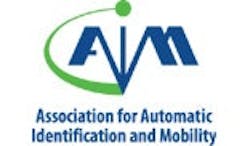By Bert Moore, director of communications and public relations, AIM GlobalThere have been a number of recent articles and editorials about an anticipated FDA mandate for RFID tags to improve pharmaceutical supply safety and security by providing a "pedigree" for each container or bulk pack.No one's disputing the fact that counterfeiting, diversion and adulteration of pharmaceuticals is becoming a greater concern these days, particularly since these activities have moved from "lifestyle" medications such as Viagra to lifesaving medications.The use of RFID tags to not only provide accurate records that document an unbroken chain of custody but also provide a timeline of movement will go a long way towards helping detect and eliminate product diversion and counterfeiting.
The question is whether or not the RFID tags to be used will be "bargain priced" once the next generation of EPC tags, the "UHF Gen2" tags, come onto the market.The answer is a flat "no."This isn't because Gen2 tags won't come down in price once volume production starts, the reason is a bit more fundamental: these aren't the tags that will likely be used.UHF RFID (860-920 MHz) is affected by close proximity to both metal and liquids. While there are workarounds for these limitations, the FDA today is clearly leaning towards a different, lower frequency (13.56 MHz) for pedigree RFID.Lower frequencies of radio waves have a greater ability to penetrate obscuring materials and are less affected by the presence of liquids and moisture. This is simply because the radio waves are longer and small fluctuations result in less distortion.Admittedly, no RF system is immune to the effects of liquids and metals. Each frequency range reacts differently. Higher frequencies are more likely to be reflected by metals while lower frequencies are absorbed by it. And metal, in the form of mineral iron, is present in some pharmaceuticals. High enough concentrations of iron or other minerals might adversely affect low frequency RFID (350 kHz and below).The choice between UHF and 13.56 MHz is one of compromise. In all probability, 13.56 MHz will provide better performance for pedigree applications (because of the tags' proximity to the product) even though UHF will be used on shipping containers and pallets.As a result, pedigree RFID tags will not benefit from volume production of EPC tags. At the same time, if pedigree tags do become mandatory, their volumes may well rival those of EPC tags and that will, in time, result in lower costs.





